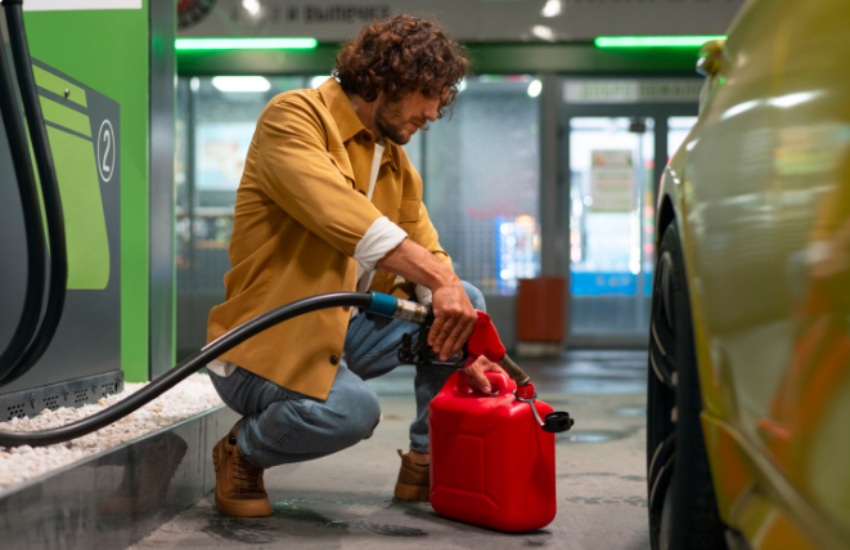
When it comes to heating homes or powering specific machinery, kerosene remains a dependable fuel source throughout the United Kingdom. However, with the UK’s unpredictable weather—ranging from frosty winters to wet and windy springs—storing kerosene properly is more than just a recommendation; it’s a necessity. If not stored correctly, kerosene can degrade in quality, pose safety hazards, and even lead to costly environmental incidents.
In this guide, backed by 20 years of content writing experience in the energy sector, we’ll cover everything you need to know about how to store kerosene safely in British weather conditions—ensuring safety, longevity, and compliance with UK regulations.
Why Safe Kerosene Storage Matters
Before diving into the how, let’s explore the why:
- Fire and explosion risk: Kerosene is flammable. Improper storage increases fire risks.
- Degradation: Exposure to moisture, sunlight, or air can cause kerosene to deteriorate.
- Environmental regulations: The UK has strict laws regarding fuel storage and spill prevention.
- Equipment damage: Contaminated kerosene can clog heating systems and reduce efficiency.
Safe storage isn’t just good practice—it’s essential for cost-effectiveness, environmental protection, and legal compliance.
British Weather and Its Impact on Kerosene Storage
British weather is infamous for its unpredictability—sunny one hour, pouring rain the next, and cold enough to freeze pipes the following morning. Here’s how common weather patterns affect kerosene storage:
- Rain and humidity introduce moisture into storage containers, promoting microbial growth and fuel contamination.
- Freezing temperatures can cause condensation inside tanks, diluting kerosene and potentially freezing small lines.
- Wind can damage unsecured storage units, especially lightweight containers.
- UV exposure (yes, even in the UK) can degrade plastic tanks and reduce the fuel’s quality.
Understanding these risks helps in choosing the right containment and placement strategy.
Best Practices for Storing Kerosene Safely
1. Use an Approved Storage Container or Tank
Always store kerosene in a container designed specifically for fuel storage. In the UK, tanks must comply with OFTEC standards and should be:
- Made from UV-resistant plastic or corrosion-resistant metal.
- Equipped with a tight-sealing lid or cap.
- Clearly labelled “kerosene” and marked as flammable.
For domestic users, tanks should typically hold no more than 3,500 litres unless you have special permissions.
2. Position the Tank Wisely
The location of your kerosene tank matters just as much as the container itself.
- Avoid low-lying areas that may flood.
- Ensure it’s at least 10 metres from any watercourse (as per UK environmental regulations).
- Place the tank on a solid, level base, like concrete or paving slabs.
- Keep it away from direct sunlight, walls, and trees to avoid fire hazards and reduce degradation.
If storing kerosene indoors (e.g., in a garage or shed), make sure the area is well-ventilated and away from heat sources or electrical panels.
3. Invest in a Bunded Tank
A bunded tank has a second layer of containment—a tank within a tank. This design ensures that if the inner tank leaks, the outer shell will contain the spill.
Bunded tanks are a must for:
- Commercial storage
- Larger volumes (over 2,500 litres)
- Environmentally sensitive areas
They provide added protection against leakage and environmental damage, particularly in rain-prone or flood-risk regions of the UK.
Preventing Contamination and Degradation
Contaminated kerosene is a common issue, especially in areas with high rainfall and cold temperatures. Here’s how to prevent it:
- Check for water accumulation using a water-finding paste or probe.
- Use fuel additives designed to prevent microbial growth and improve kerosene stability.
- Keep the tank topped up to reduce air space where condensation could form.
- Clean your tank annually to remove sludge, bacteria, and water residue.
Regular maintenance helps protect both your fuel and the equipment that relies on it.
Security and Legal Compliance
In the UK, kerosene theft is a real risk, especially in rural areas. To protect your fuel:
- Install lockable caps and consider motion-activated lighting.
- Use a tank alarm that notifies you of sudden drops in fuel level.
- Keep detailed records of fuel deliveries and usage.
Also, check with your local council or Environment Agency to ensure you’re meeting all applicable regulations, especially if you’re storing large quantities.
Adapting to Seasonal Changes
Winter
- Add an anti-gelling additive.
- Check tank insulation and secure all openings.
Summer
- Shade the tank to minimise UV exposure.
- Monitor for water condensation inside tanks.
Plan seasonal checks—early autumn and late spring are ideal times to inspect your setup.
What to Do in Case of a Spill
Despite best efforts, accidents can happen. If you suspect a kerosene leak or spill:
- Stop the source if it’s safe to do so.
- Contain the spill using sand, absorbent pads, or a spill kit.
- Avoid washing it down drains—this causes environmental harm.
- Report the spill to your local Environment Agency office if it reaches soil or water.
Clean-up services are available for serious incidents. Don’t delay action; even small spills can cause big damage.
Final Thoughts
Storing kerosene safely in the ever-changing British climate isn’t complicated—but it does require awareness and care. From choosing the right tank and location to staying compliant with regulations and being proactive with seasonal maintenance, proper kerosene storage can prevent costly repairs, safety risks, and environmental fines.
Whether you’re a homeowner heating your rural cottage or a business relying on kerosene-powered systems, taking the time to store your fuel safely ensures peace of mind and fuel reliability all year round.





